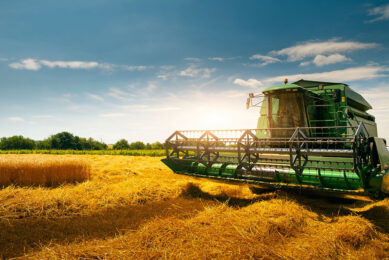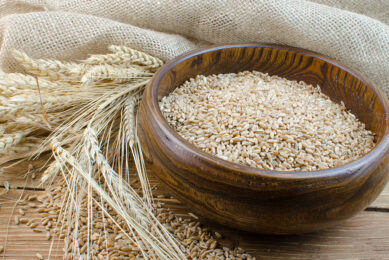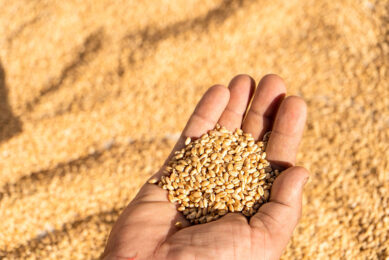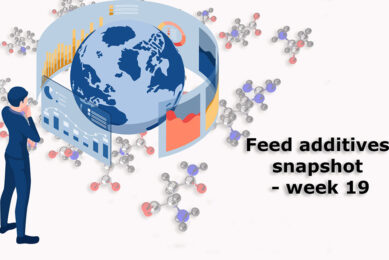Blame the wheat speculators
Many environmental factors can reduce agriculture productivity, but drought is by far the most damaging. It is also a great tool for speculators to disturb natural supply and demand mechanisms by trying to manipulate prices.
Now Russia is facing a severe drought and global grain markets are nervous. For this year Russia will not export any cereals due to drought and fire stricken crops. The nervousness is exaggerated by daily papers saying bread would become more expensive and so would meat, milk and eggs of animals fed with wheat. Well, maybe these were too cheap in the first place, at least from a farmer’s perspective.
Retail prices
Pivotal in these discussions are the retail companies, because they determine the final consumer prices. But retailers in the UK already have said that the panic over increasing food prices is premature. It only has been a few years that cereal prices skyrocketed (2008) and these increased prices were passed on to retail prices.
When commodity prices went down again, consumer prices did not. Retail margins were restored and there is some buffering in the system. Furthermore, the retail market is very competitive and this will limit the level of price increases. So, from that perspective all the uproar is just a lot of air.
Wheat harvest data
The whole discussion is about the Russian harvest and indeed Russia was the third largest wheat exporter last year. But it is better to look at the greater picture and focus on the forthcoming crops of the world’s other wheat exporters. And we should not forget that 2008 and 2009 saw record crops, resulting in substantial global wheat stocks.
Let’s get some facts together: Russia had two large wheat crops in a row according to statistics from the Foreign Agricultural Service of USDA (see table below). Their 2008/09 crop was 63.7 million tonnes, 9.3% of world production, and the 2009/10 crop was 61.7 mt, 9.1% of world production. In 2009/10 Russia was the world’s fourth largest producer after the EU, China and India and just ahead of the US.
Russia exported 18.4 mt in 2008/09 and 17.5 mt in 2009/10, respectively, 12.9% and 13.5% of world exports. In late July, the US agricultural attaché in Russia projected production for this year at 50 mt and exports of 14 mt.
(x 1,000 tonnes) | Production | Consumption | Ending stocks | |||
Year | Russia | World | Russia | World | Russia | World |
2005/06 | 47,700 | 619,054 | 38,400 | 622,854 | 5,454 | 149,012 |
2006/07 | 44,900 | 595,912 | 36,400 | 615,988 | 4,231 | 128,936 |
2007/08 | 49,400 | 611,019 | 37,650 | 617,300 | 3,869 | 122,655 |
2008/09 | 63,700 | 683,275 | 38,900 | 640,703 | 10,479 | 165,227 |
2009/10 April | 61,700 | 678,423 | 42,200 | 647,831 | 12,679 | 195,819 |
Small wheat crops are nothing new for Russia. It had a crop of 44.9 mt in 2006/07 and 49.4 MMT in 2007/08, when exports were, respectively, 10.6 mt and 12.6 mt. In the past 10 to 15 years production swings from one year to the next were as much as 16 mt. Until this year, wheat production and exports have been trending upward over the last decade.
Analysts say that even in the worst case scenario wheat supply in 2010 is above the most recent low in 2006. So, from this perspective there is not much reason to increase prices.
Speculators
Leaves us the speculators, in the past also often accused of manipulating market pricing. Russian alarm signals are grist to their mills. Speculators live from price fluctuations, so they are no more than happy to “fuel the fire”, so to speak. Investors buy up wheat on the global commodity markets in the expectation that prices will rise still further – in part as a result of their purchase squeezing supplies – and that they will be able to make a profit as a result.
They are artificially influencing the basics of supply and demand. But once the first trade storm has died down and it becomes clear that there is enough wheat the speculators might end up burning their own fingers.
Release intervention stocks
FEFAC President Patrick Vanden Avenne therefore urged the EU Commission to immediately release EU intervention stocks of barley to help reduce market price volatility induced by speculation.
Presently, more than 5 mio. t of intervention cereals (mostly barley) are stored at public intervention. Placing such stocks back on the EU market is essential to help combat undue speculation and price volatility.
Furthermore, it is an obligation imposed by the Court of Auditors who requested the EU Commission to resell intervention stocks in order to benefit from opportunities of high quotations thus saving public money.
Referring to concerns expressed by COPA-COGECA regarding the dysfunctional EU cereals market, Vanden Avenne highlighted that “The present cereals market situation proves that futures markets as they function today, are not effective to assist farmers and their customers to manage increasing price volatility for essential commodities. We therefore invite the EU Commission to also reflect on any additional measures that would allow controlling excessive speculation on the futures markets.”
Join 26,000+ subscribers
Subscribe to our newsletter to stay updated about all the need-to-know content in the feed sector, three times a week. Beheer
Beheer









 WP Admin
WP Admin  Bewerk bericht
Bewerk bericht